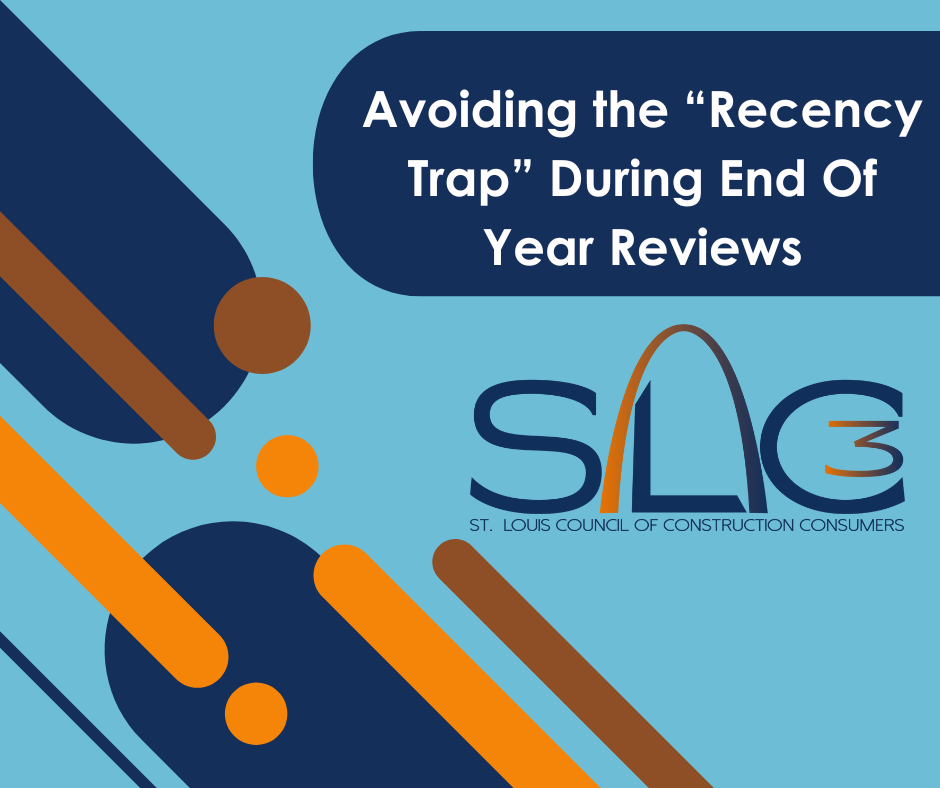Performance reviews are supposed to reflect an employee’s work over an entire year—yet, all too often, they mostly reflect the last few weeks or months.
That’s the recency trap: when the most recent wins (or mistakes) overshadow everything that came before. It’s common, it’s human, and it quietly erodes trust in your review process.
The good news? With a few simple habits, you can dramatically reduce recency bias and make performance reviews more fair, accurate, and useful—for both managers and employees.
What Is the “Recency Trap”?
The recency trap is our tendency to put more weight on recent events than on things that happened earlier—even when we’re supposed to be looking at the full picture.
In performance reviews, it looks like:
- A strong Q4 wiping away a year of missed deadlines.
- One recent error overshadowing months of solid, reliable work.
- A flashy, high-visibility project getting more credit than steady contributions all year long.
When that happens, the review stops being a year in review and becomes a last quarter in review—which isn’t fair to anyone.
Why Recency Bias Is a Problem
Recency bias isn’t just a technical flaw—it has real consequences:
- It feels unfair. Employees know when important early-year projects are ignored. That frustration sticks.
- It hurts motivation. If people believe only the last few weeks count, there’s less incentive to sustain strong performance across the whole year.
- It distorts decisions. Promotions, raises, and development opportunities may go to the person who happened to have a good stretch at the end—not the one who consistently delivered.
If reviews are going to guide pay, promotions, and growth, they have to be based on more than short-term memory.
How Recency Bias Shows Up for Managers and Employees
For Managers
Managers fall into the recency trap when they:
- Rely mostly on memory instead of notes or data.
- Focus heavily on the most recent project, client interaction, or fire drill.
- Let a “noisy” event (a big win or a big problem) dominate their perception.
You might notice it if your review discussions include a lot of,
“Let’s talk about what happened in the last couple of months…”
and not much about the rest of the year.
For Employees
Employees can unintentionally reinforce recency bias by:
- Writing self-reviews that only highlight recent accomplishments.
- Forgetting to mention early-year wins, stretch assignments, or learning moments.
- Downplaying long-term projects because they wrapped up months ago.
If the self-review only reflects the latest chapter, the whole story gets lost.
Simple Systems to Capture the Whole Year
You don’t need a complex HR system to fight recency bias. You just need systems that remember better than your brain does.
For Managers
Try these habits:
- Keep a running “wins & watch-outs” log for each person.
Just a simple document where you jot down key contributions, feedback, and challenges as they happen. - Use quarterly or mid-year check-ins as mini data points.
Document goals, progress, and feedback in each conversation and revisit them at year-end. - Save project debriefs.
After major projects, note who did what, what went well, and what could improve—and store these notes centrally.
For Employees
Encourage team members to:
- Maintain a “brag sheet” or success log.
A simple running list of accomplishments, metrics, and positive feedback. - Save positive emails and feedback.
Screenshots or folders of “wins” from clients, peers, and leaders are gold at review time. - Note key projects and outcomes right after they wrap.
A quick recap: goals, role, results, and what they learned.
When both sides keep records, the review becomes a genuine collaboration—not a memory test.
Make Reviews More Objective (and Less Emotional)
The more concrete your review, the less power recency bias has.
Aim to ground your assessments in:
- Specific examples from throughout the year
Reference projects, tasks, or situations from different quarters—not just the last one. - Clear metrics where possible
Deadlines met, throughput, quality measures, client satisfaction, cost savings, revenue impact, etc. - Multiple perspectives
Where appropriate, incorporate feedback from peers, project leads, and cross-functional partners—not just your own observations. - Agreed-upon goals
Compare performance against goals set at the start of the year (or at mid-year), not against vague expectations that shifted over time.
This doesn’t remove judgment, but it grounds it in evidence.
Build Better Habits Now for Fairer Reviews Later
Avoiding the recency trap isn’t about fixing one review cycle and moving on. It’s about building habits that make performance conversations better year after year.
A few final suggestions:
- Make documentation a normal part of the culture.
Short notes after big projects, regular check-ins, and shared logs go a long way. - Train managers on common biases.
Recency bias is just one; halo effect, central tendency, and favoritism can also creep in. - Encourage employees to advocate for their full year.
Invite them to bring their own timeline or highlight sheet to the review.
When reviews reflect the entire year—not just the last chapter—they become more fair, more trusted, and more useful for everyone involved
By taking a little time throughout the year to document progress and reflect consistently, you’ll make year-end reviews far more accurate and meaningful. Avoiding the recency trap isn’t about adding more paperwork—it’s about building fairer, more productive conversations that recognize the full scope of each person’s contributions.
When teams feel seen for all they’ve accomplished, not just what’s fresh in memory, it strengthens trust, engagement, and performance across the board.






